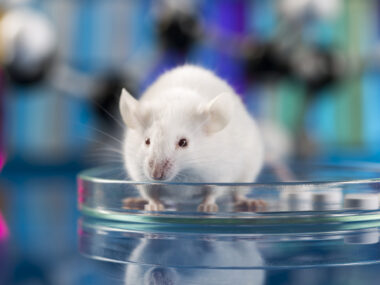Pregnancy possible for women with sickle cell after stem cell transplant
Findings refute shared opinion, underscore need for fertility counseling
Written by |

Women with sickle cell disease who undergo a stem cell transplant can become pregnant and give birth to healthy children, a new study shows.
“The results of this study show that female [stem cell transplant] recipients can achieve successful and safe pregnancies,” Katja Sockel, MD, lead study author at University Hospital Carl Gustav Carus Dresden in Germany, said in a press release. The study, “Hope for Motherhood: Pregnancy After Allogeneic Hematopoietic Cell Transplantation – a National Multicenter Study,” was published in Blood.
An Allogenic hematopoietic stem cell transplant (alloHCT) is a procedure to replace a patient’s hematopoietic stem cells, that is, specialized cells that live in the bone marrow and are responsible for making new blood cells, with cells from a healthy donor. The procedure can be curative for blood disorders like sickle cell disease and is commonly used for blood cancers.
The procedure can be highly effective, but carries notable risks. During it, patients are typically given intensive chemotherapy and/or radiation to wipe out their existing bone marrow cells and make room for the new cells to grow once they’ve been transplanted. Infertility is a possible side effect of these intensive conditioning regimens and questions about fertility can be a factor when considering alloHCT.
“Fertility is a very important topic for young female patients. Some patients even opt out of receiving certain treatments because of concerns about fertility,” Sockel said.
Pregnancy after a stem cell transplant
Here, researchers used a German database to assess pregnancy-related outcomes from a large group of women, ages 18-40, who’d undergone alloHCT between 2003 and 2018.
“To our knowledge this is the largest analysis on birth and pregnancy rates among a … cohort of adult female alloHCT recipients,” the researchers said.
Out of 2,654 patients in the analysis, 50 got pregnant at least once after an alloHCT. Most who got pregnant underwent alloHCT to treat blood cancer and the median time between alloHCT and first pregnancy was just under five years.
There were 74 pregnancies total since some patients were pregnant more than once. About three-quarters of the pregnancies resulted in live births. These numbers work out to a total first birth rate of 0.45% in the overall group, which is about six times lower than for the general population in Germany, the researchers said.
Most pregnancies (72%) were spontaneous, which means they were conceived via sexual intercourse, while the remaining ones were conceived using assistive reproductive techniques (ART) such as in vitro fertilization.
“Some study participants reported that they had not taken measures to prevent pregnancy because their doctor told them conception was not possible,” Sockel said. “Spontaneous pregnancies should not be underestimated and female patients should be educated about potential fertility restoration post-alloHCT to prevent unplanned or unwanted pregnancies.”
In further analyses, the researchers looked for factors associated with a higher or lower likelihood of pregnancy. Patients who were younger at the time of alloHCT (between ages 18-25) or who’d undergone alloHCT for reasons other than cancer were more likely to get pregnant.
No woman older than 35 got pregnant. Though factors such as socioeconomic challenges from cancer treatment, recommended timing between transplant and pregnancy, and decreased ovarian reserve, that is, having fewer eggs in the ovaries, may have a played a role, the authors said they didn’t have data on the desire and attempts to get pregnant for women who didn’t report pregnancies.
The likelihood of a pregnancy also was increased in those who’d undergone less intensive conditioning regimens, such as lower doses of radiation or non-myeloablative regimens, which don’t entirely destroy the existing bone marrow, as opposed to myeloablative regimens that wipe out all bone marrow cells.
Among those who got pregnant, there were higher rates of preterm birth, defined as delivery before 37 weeks of pregnancy, and low birth weight (less than 2.5 kg, or 5.5 pounds) relative to the general population.
“These findings help provide a basis for counseling young women of childbearing age and raising awareness of and funding for different ART techniques so that patients can have a normal life after alloHCT,” Sockel said.






